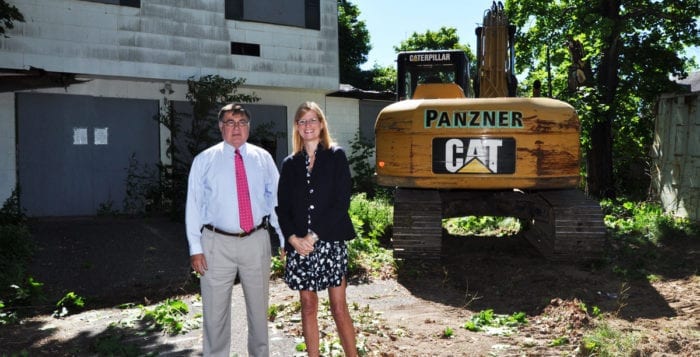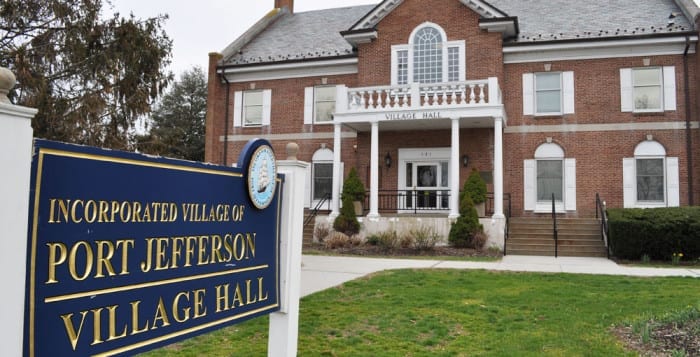Let there be light.
Representatives from Johnson Controls, an energy performance contracting company, presented a plan to the Port Jefferson Village board of trustees at a meeting Tuesday that would save the village about $1.6 million on energy costs and electrical supplies over 20 years.
The project would entail providing Village Hall and the Village Center with more than 500 LED lighting upgrades, LED lighting fixtures for the village’s more than 1,100 streetlights and 60 new tennis court lights.
“We really haven’t done a lot of upgrades to the existing lighting in forever,” Mayor Margot Garant said during the meeting Tuesday. She called the proposed project “a thing of beauty.”
Dan Haffel, Johnson Controls’ liaison to the village, estimated during the presentation that the project would pay for itself in about 11 years. Port Jefferson would pay the company $1.8 million out of their energy savings — “it’s completely self-funded; there’s no out-of-pocket exposure,” Haffel said — for the consulting and improvements over the life of a 15-year contract, with an interest rate somewhere in the 2 to 3 percent range.
The agreement would come with a guarantee from Johnson Controls.
“The project is guaranteed to pay for itself in 15 years — we’ll pay the village a shortfall if there is one,” Haffel said.
Rob Rolston, the lead project manager from Johnson Controls, said it would be ideal to complete the project before winter, given the complications cold weather and winter storms could present. That would require quick movement from the village.
But the company also put forth a more conservative potential timeline as part of their presentation. If the board approved the proposal in July, fixtures and lights could be ordered by August and construction could begin in September. The job could then be completed in May 2017.
Many of the upgraded lights in Village Hall and the Village Center would incorporate motion sensors as another means to save electricity. The streetlights come with a 10-year manufacturer warranty.
Johnson Controls is a nationwide Fortune 100 company that has been in the field of performance contracting for about 30 years. They have received awards for their environmental impact and energy efficiency from entities like Newsweek and utility PSEG Long Island.
Port Jefferson school district is working on a contract with Johnson Controls for a similar project, according to Assistant Superintendent for Business Sean Leister. He called the proposed upgrades, which still require school board-approval, a “win-win” for the district for the energy and cost savings it would present in a phone interview last week.
The village board has not yet set a date to vote on the proposal.




















